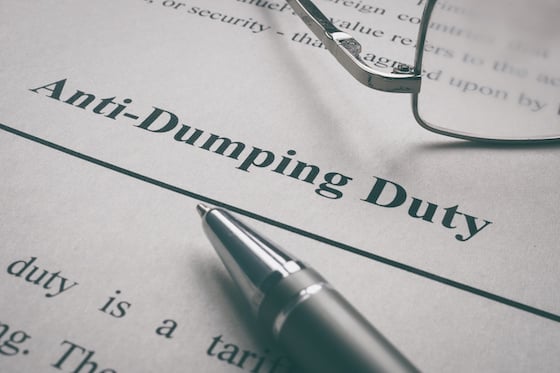 Anti-dumping (ADD) and countervailing duties (CVD) are intended to protect the U.S. manufacturing industry from foreign manufacturers flooding the market at artificially reduced prices.
Anti-dumping (ADD) and countervailing duties (CVD) are intended to protect the U.S. manufacturing industry from foreign manufacturers flooding the market at artificially reduced prices.
Dumping occurs when foreign companies sell goods in the U.S. at less than fair value. Countervailing situations are when a foreign government gives their companies tax breaks and subsidies, allowing them to sell goods cheaply in the U.S. Both dumping and countervailing activities lead to foreign undercutting of U.S. manufacturers’ prices.
How ADD and CVD Are Calculated
Anti-dumping duties are calculated at a company-specific level, where the duty amount makes up for the difference between the foreign manufacturer’s price and fair market value. In these cases, certain companies have been identified, investigated and have additional duties charged on their products. Countervailing duties are determined on a country-specific level, and the duty rates counteract the subsidy or tax breaks given to the foreign manufacturer by their government with the intent of leveling the playing field.
When either of these situations occurs, petitions are filed by U.S. manufacturers or businesses with the Department of Commerce (DOC) which, along with the U.S. International Trade Commission (USITC), opens an investigation. If the results are positive, U.S. Customs and Border Protection (CBP) withholds liquidation of entries and collects ADD/CVD duties. The entries are not liquidated until the DOC instructs CBP headquarters to do so.
How CBP Procedures Affect U.S. Importers
An investigation that finds evidence of injury to a U.S. industry (a positive result) triggers CBP procedures that affect U.S. importers. For an anti-dumping case, CBP issues a case number beginning with (A), Case # A… for a particular foreign manufacturer. Importers and/or customs brokers then must report the case number on every entry (CBP form 7501, block 29) pertaining to this manufacturer. CBP will also look for evidence of bond during their investigation. If determined guilty, CBP will set the penalty and retroactively collect additional duties through the bond. These additional duties are determined by ITC and DOC with CBP as the enforcing agency.
Procedures for countervailing duties are similar to those for anti-dumping duties: Investigation, case number beginning with (C), retroactive penalties. The difference is that under CVD the foreign manufacturer is subsidized by their government.
How to Determine If a Commodity Falls under ADD/CVD
Your customs broker should be able to help you determine if a commodity falls under ADD/CVD. Further, you can review the scope of ADD/CVD orders to determine whether the merchandise falls under the scope of an order. The scope of AD/CVD orders can be found in several places:
For more resources, read CBP’s AD and CVD Frequently Asked Questions.
Like what you read? Join thousands of exporters and importers who subscribe to Passages: The International Trade Blog. You’ll get the latest news and tips for exporters and importers delivered right to your inbox.